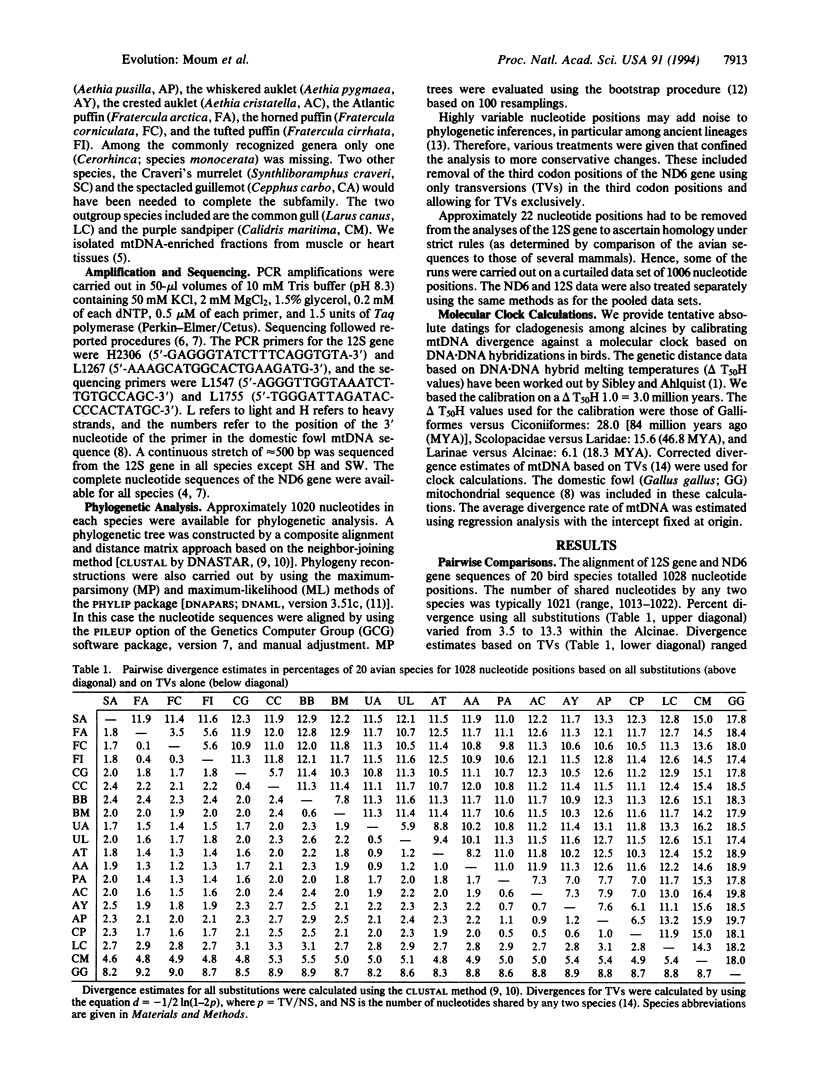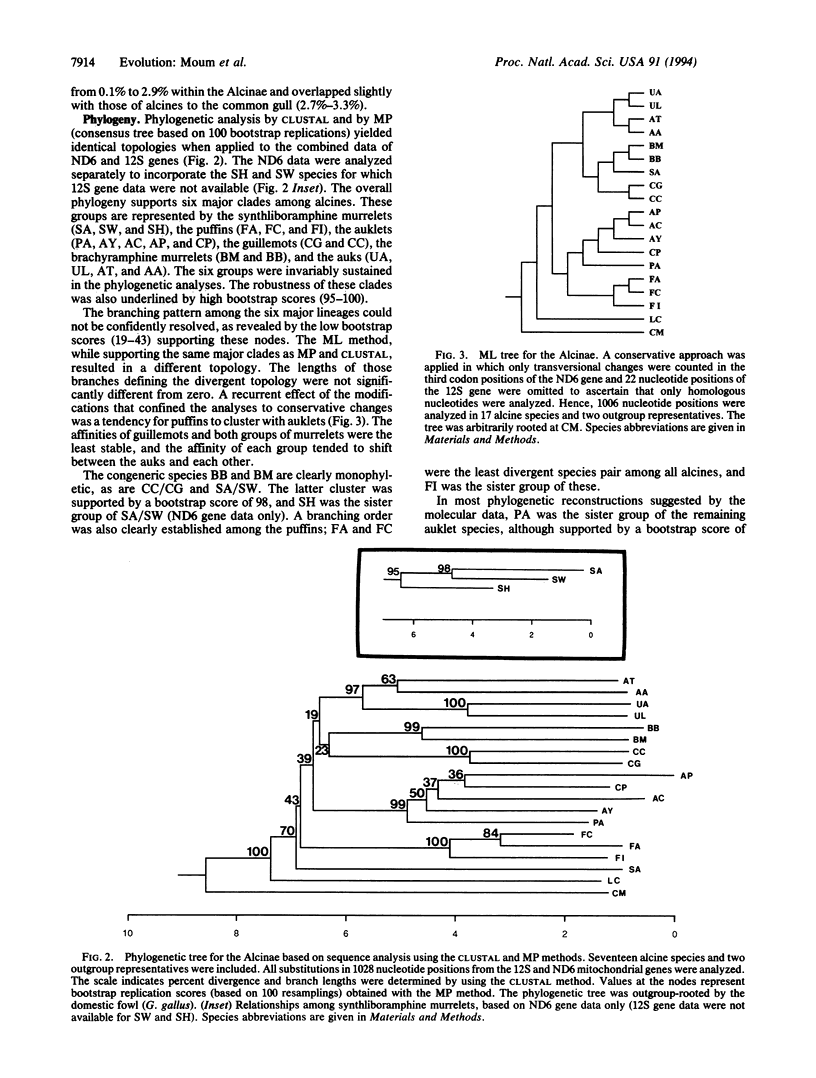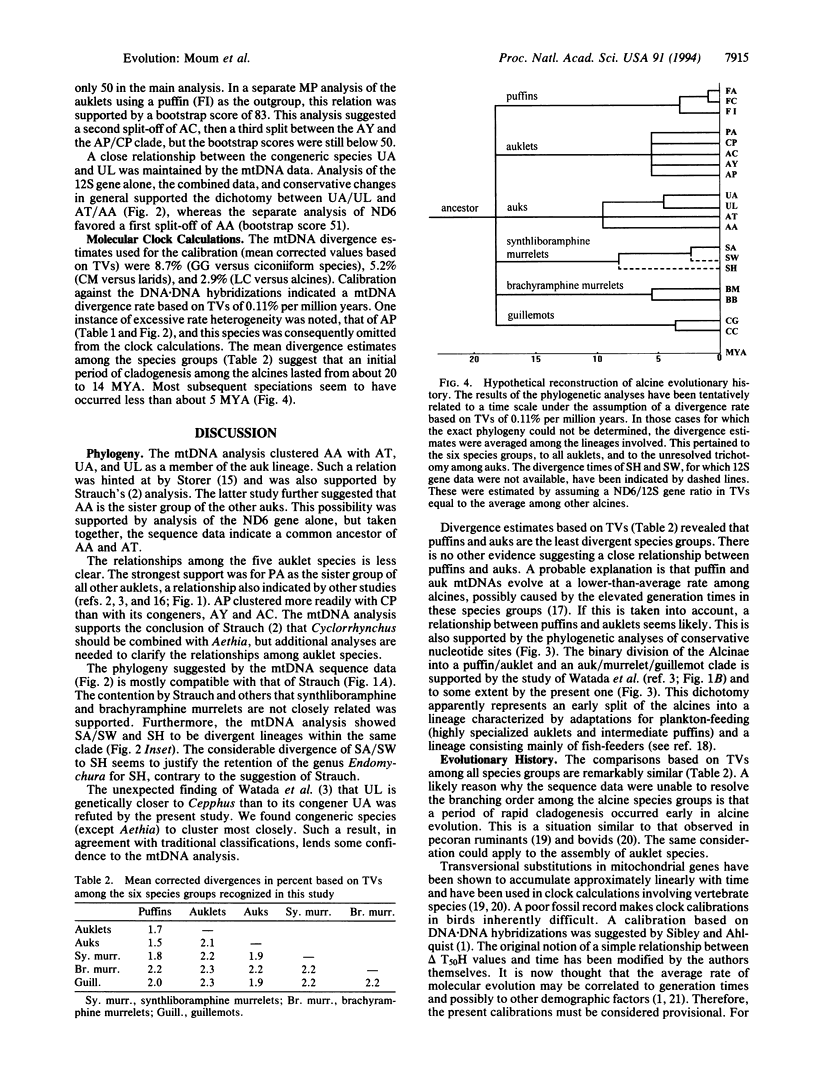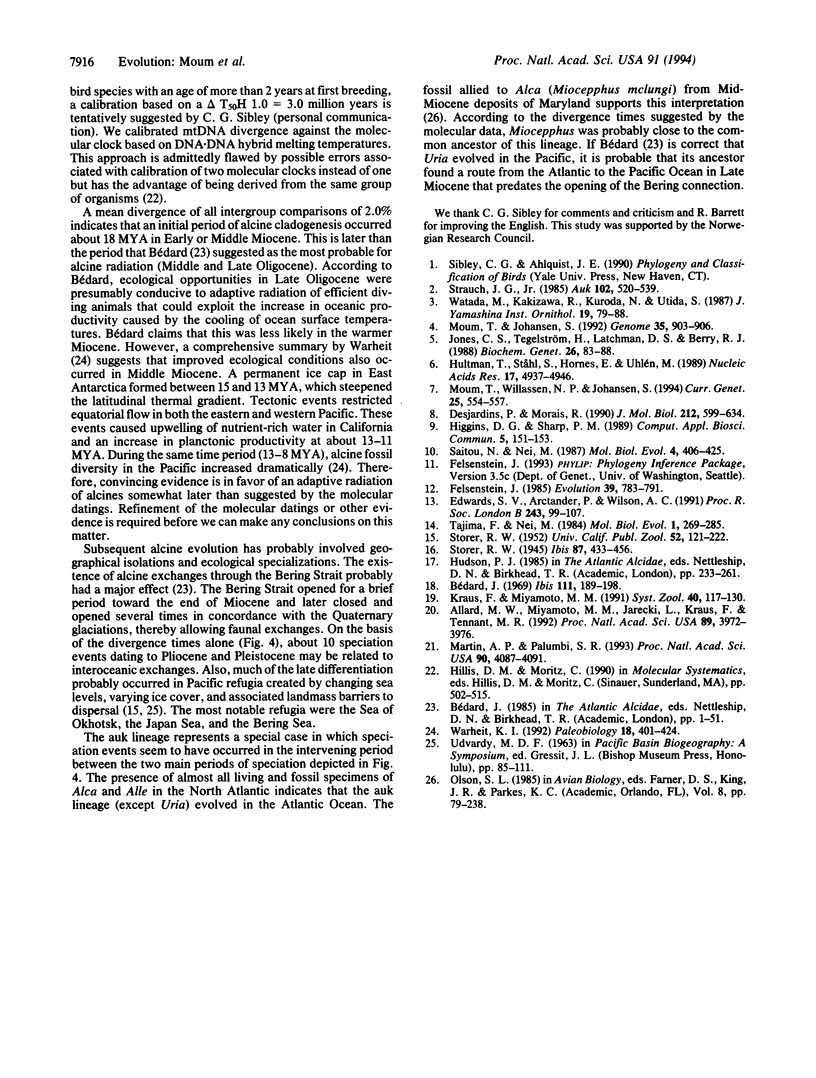Abstract
The genetic divergence and phylogeny of the auks was assessed by mitochondrial DNA sequence comparisons in a study using 19 of the 22 auk species and two outgroup representatives. We compared more than 500 nucleotides from each of two mitochondrial genes encoding 12S rRNA and the NADH dehydrogenase subunit 6. Divergence times were estimated from transversional substitutions. The dovekie (Alle alle) is related to the razorbill (Alca torda) and the murres (Uria spp). Furthermore, the Xantus's murrelet (Synthliboramphus hypoleucus) and the ancient (Synthliboramphus antiquus) and Japanese murrelets (Synthliboramphus wumizusume) are genetically distinct members of the same main lineage, whereas brachyramphine and synthliboramphine murrelets are not closely related. An early adaptive radiation of six main species groups of auks seems to trace back to Middle Miocene. Later speciation probably involved ecological differentiations and geographical isolations.
Full text
PDF




Selected References
These references are in PubMed. This may not be the complete list of references from this article.
- Allard M. W., Miyamoto M. M., Jarecki L., Kraus F., Tennant M. R. DNA systematics and evolution of the artiodactyl family Bovidae. Proc Natl Acad Sci U S A. 1992 May 1;89(9):3972–3976. doi: 10.1073/pnas.89.9.3972. [DOI] [PMC free article] [PubMed] [Google Scholar]
- Desjardins P., Morais R. Sequence and gene organization of the chicken mitochondrial genome. A novel gene order in higher vertebrates. J Mol Biol. 1990 Apr 20;212(4):599–634. doi: 10.1016/0022-2836(90)90225-B. [DOI] [PubMed] [Google Scholar]
- Edwards S. V., Arctander P., Wilson A. C. Mitochondrial resolution of a deep branch in the genealogical tree for perching birds. Proc Biol Sci. 1991 Feb 22;243(1307):99–107. doi: 10.1098/rspb.1991.0017. [DOI] [PubMed] [Google Scholar]
- Higgins D. G., Sharp P. M. Fast and sensitive multiple sequence alignments on a microcomputer. Comput Appl Biosci. 1989 Apr;5(2):151–153. doi: 10.1093/bioinformatics/5.2.151. [DOI] [PubMed] [Google Scholar]
- Hultman T., Ståhl S., Hornes E., Uhlén M. Direct solid phase sequencing of genomic and plasmid DNA using magnetic beads as solid support. Nucleic Acids Res. 1989 Jul 11;17(13):4937–4946. doi: 10.1093/nar/17.13.4937. [DOI] [PMC free article] [PubMed] [Google Scholar]
- Jones C. S., Tegelström H., Latchman D. S., Berry R. J. An improved rapid method for mitochondrial DNA isolation suitable for use in the study of closely related populations. Biochem Genet. 1988 Feb;26(1-2):83–88. doi: 10.1007/BF00555490. [DOI] [PubMed] [Google Scholar]
- Martin A. P., Palumbi S. R. Body size, metabolic rate, generation time, and the molecular clock. Proc Natl Acad Sci U S A. 1993 May 1;90(9):4087–4091. doi: 10.1073/pnas.90.9.4087. [DOI] [PMC free article] [PubMed] [Google Scholar]
- Moum T., Johansen S. The mitochondrial NADH dehydrogenase subunit 6 (ND6) gene in Murres: relevance to phylogenetic and population studies among birds. Genome. 1992 Dec;35(6):903–906. doi: 10.1139/g92-139. [DOI] [PubMed] [Google Scholar]
- Moum T., Willassen N. P., Johansen S. Intragenic rearrangements in the mitochondrial NADH dehydrogenase subunit 6 gene of vertebrates. Curr Genet. 1994 Jun;25(6):554–557. doi: 10.1007/BF00351677. [DOI] [PubMed] [Google Scholar]
- Saitou N., Nei M. The neighbor-joining method: a new method for reconstructing phylogenetic trees. Mol Biol Evol. 1987 Jul;4(4):406–425. doi: 10.1093/oxfordjournals.molbev.a040454. [DOI] [PubMed] [Google Scholar]
- Tajima F., Nei M. Estimation of evolutionary distance between nucleotide sequences. Mol Biol Evol. 1984 Apr;1(3):269–285. doi: 10.1093/oxfordjournals.molbev.a040317. [DOI] [PubMed] [Google Scholar]


